| Columns Retired Columns & Blogs |
all five USB connectors on the 151 are of the USB-A type...
I asked Größler why the 151 MK2 doesn't directly convert or output PCM above 24/192 and why it didn't keep DSD data in the DSD realm, instead converting it to 24/192 PCM.
"Serial data streaming like DSD and packed data transport like PCM are just different ways of presenting the exact same sort of information. That's why if you find differences, they're not technology-related; they're customer and business-related.
"It's all about the physics. Sometimes the decimation filters that resampling requires have a sound due to preringing and postringing. A perfect impulse doesn't have preringing and postringing, but in the digital world, it happens naturally. So, you might have special digital filters that move the preringing to postringing. Sometimes you can hear it. Due to the heavy dynamics and fine details of classical music, some formats may sound better than others, but that's only because the mathematics work better with certain filters.
"We will eventually be able to support higher bit rates and sampling rates, but the technology isn't finalized on our end. Regardless, I don't think perceived sound differences are due to the technology. I think some labels make one format sound better than another so you can spend more."
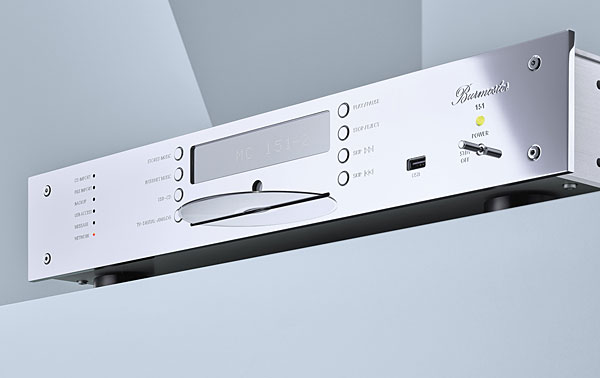
Simplicity?
"We never make products intentionally complex," Größler told me. "We don't over-complicate." Nonetheless, I found some of the 151 MK2's many functions a challenge to master.
Some of my initial confusion arose not from a dearth of information but rather from its abundance. The unit arrived with four impressive English-language manuals: an iPad App User Interface (42 pages), an Operational Manual (32 pages), a Web Interface manual (42 pages), and a Tidal Owner's Manual (10 pages). The language was simple and clear, the graphics abundant, but the options were dizzyingly numerous. Manuals often referred to each other. At one point, I put the iPad atop the unit (which was on the rack's top shelf), put one manual beside it, held another in my hands, and attempted to go between pages in different manuals. Then everything tumbled to the floor. That's when I put out calls for help via email and WhatsApp, took a break, and addressed my frustration by walking the dogs, running three miles, and eating everything in the refrigerator.
After those consultations (via WhatsApp), I felt ready to proceed. I moved my Ethernet cable from the dCS Rossini DAC to the Burmester, attached balanced interconnects from its XLR outputs to the inputs of my balanced-only D'Agostino Progression M550 monos, and adjusted the Burmester's audio output voltage to match the gain of the Progression M550s (footnote 3).
When it was time to evaluate the 151 MK2 Musiccenter as music server/DAC with an external preamp, I reconnected my D'Agostino monoblocks to my D'Agostino Momentum HD preamp, connected balanced interconnects from the preamp's inputs to the Burmester's balanced outputs, and changed the Burmester's audio settings to "fixed volume."
Finally, to evaluate the 151 MK2 as a music server only, I restored the balanced interconnects to their normal positions and ran a single S/PDIF digital cable from the Burmester to the dCS Rossini. I heeded Burmester's warning to turn off every component before switching cables, lest damage or unwanted pops from the speakers occur. Following directions, I updated the 151 MK2 Musiccenter's firmware.
In addition to playing files loaded into internal memory and streamed from Qobuz and Tidal, I evaluated how the sound of a Red Book CD ripped to internal storage compared to its 16/44.1 stream.
Ingesting music
Like most music servers, the Burmester works best with a music library that's already optimized and organized. Like most music servers, it sometimes struggles in ingesting new music.
When Burmester's software correctly identified music added to the 151 MK2 Musiccenter's internal SSD, playback proceeded smoothly. Once, though, I attempted to add 52 albums at once from a USB stick. These files were organized in the usual way, each album in its own folder. Burmester's software, though, seemed to ignore the file structure, aggregating music in long lists of tracks under the labels "Various Artists" and "Unknown." Sometimes, when folder structure was respected, cover photos stored in the same folder as the music failed to display (footnote 4). Nor could I find a way to open pdf liner notes. If I knew a recording's contents, I could locate files and reconstitute/rename folders, but this took time.
The last recording I auditioned with the 151 MK2 Musiccenter, François-Xavier Roth and Les Siècles's marvelously played, otherworldly period-instrument rendition of Debussy's five-act opera Pelléas et Mélisande (24/96 WAV, Harmonia Mundi HMM 905352.54), challenged both the Burmester app and Roon, which I consider the state of the art in music-server software. Roon first: Although the opera's 38 music files were divided into three subfolders—CD 1, CD 2, and CD 3, with tracks within each labeled in sequence beginning with "01"—Roon ignored the subfolders, lumped everything together, and played all three "01" tracks before moving on to the three "02"s. In rapid succession, Mélisande was lost in the forest, seducing Pélleas, dead, and then lost again. An opera about reincarnation Debussy did not write. To hear what he intended, I needed to relabel the 38 files as "1-01" through "3-15" (footnote 5).
To import this opera into the Burmester, I loaded it on a USB stick all by itself. The folder structure was respected, but the device labeled the folder "Unknown" and displayed neither cover art nor liner notes. It was easy to add the opera title, but there still was no support for displaying liner notes from files.
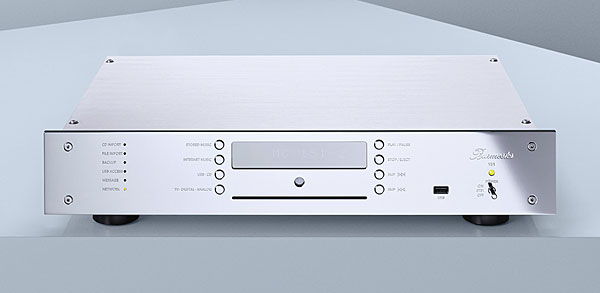
Designer Stefan Größler described Burmester's approach to ingesting music: "When importing or playing music from external storage, we use the metadata provided in the music files. When the music is imported, the meta information is also transferred to the local database and can be edited by the user in the web UI. ... If the music library that is to be imported is well maintained and the tags are neat you are fine." If it's just files in a folder without metadata, it may not work as well. "The 151 relies on tags, folder structure, and filenames."
Once the files were located and the folders identified, the Burmester 151 MK2 performed flawlessly. I easily added music to playlists and played whichever tracks I wished. And they sounded mighty fine.
The joys of listening
With the 151 MK2 Musiccenter operating in its full capacity as a server/streamer/DAC with volume control, I ripped one of my favorite CDs, Murray Perahia Plays Handel and Scarlatti (Sony SK62785), to its SSD. The process went smoothly. The app located the correct cover art in Burmester's database and displayed it, and the tracks were displayed correctly. With the app playing the ripped files, I found the sound more vivid and engaging than the sound of the Qobuz stream. As a CD ripper and playback system, the Burmester 151 MK2 Musiccenter excels. The 151 MK2 can also play back CDs without ripping them.

To prepare for a concert I would review for Classical Voice North America, I streamed Mozart's Sonata in B-flat major, K.454, from Pinchas Zukerman and Marc Neikrug's Sony recording, Mozart: The Complete Sonatas for Violin and Piano (16/44.1 FLAC, Sony/Tidal). Air and spaciousness were excellent, the soundstage was wide, and the music flowed, warm and involving.
The Burmester's delivery of the B-flat major's gorgeous second movement andante from these artists' hands transformed it into one of the most serene, "I could die right now and go to heaven smiling" pieces of music I've heard. It touched me far more than the live performance I heard two nights later from an acoustically ideal seat. A finer compliment to a music playback system cannot be paid.
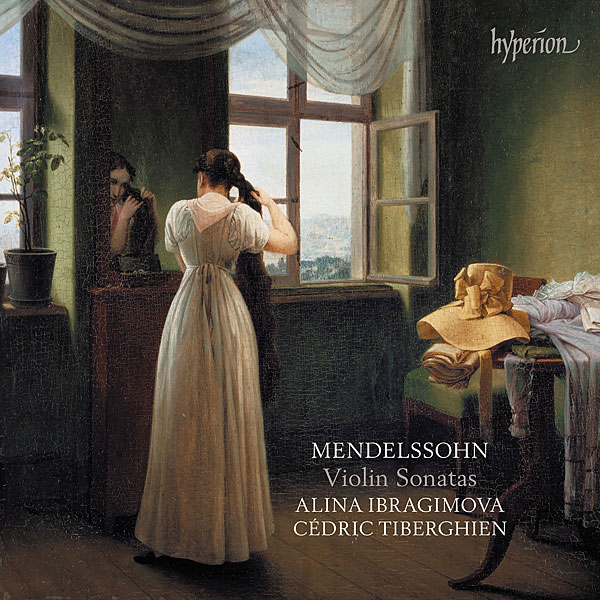
Next, I revisited a recording I reviewed in the April 2022 issue, Alina Ibragimova and Cédric Tiberghien's new Mendelssohn: Violin Sonatas (Hyperion CDA68322, 24/96 WAV). The violin sounded liquid and free, and the energy of the two players projected with perfection. The piano sound, though, was somewhat flat, the colors somewhat muted.
An entirely different sound world awaited on Jonathan Cohen and Arcangelo's recent period-instrument recording of Bach Cantatas Nos.35 & 169 with countertenor Iestyn Davies (Hyperion CDA68375, 24/96 WAV). Although reproduction lacked the last iota of pristine silence between notes, the glorious sounds of baroque orchestra and voice filled me with joy.

Switching musical gears: Bass was excellent on my old standby, "Electrified II" from Yello's Toy (24/48 FLAC), but there was again a bit of gray between each gut-shaking note. Ditto for the fabulous bass on Martin Garrix's single, Animals (Qobuz 16/44.1 FLAC), which I found on the Editorial Tracks from Stereophile playlist. This recording and Rickie Lee Jones's "Sympathy for the Devil," from The Devil You Know (Tidal 16/44.1 FLAC), lacked only the last iota of color and transparency.
When I bypassed the 151 MK2 Musiccenter's volume control and sent the music through the D'Agostino Momentum HD preamp, the soundstage moved farther back and opened wider. On the Mendelssohn, the delicacy and nuance of Ibragimova's touch and the overtones of her violin filled the space. The sound was smoother, and color increased. I'd expect no less from a stand-alone preamp costing $15,000 more than the multifunction Musiccenter by itself, but the comparison helped put the 151 MK2's excellence in perspective and explained why some owners of the product pair it with an external preamp.
A delightful surprise came when I switched from the Burmester's internal DAC to the dCS Rossini DAC with external clock. This left the 151 MK2 Musiccenter functioning solely as a server/streamer. While the Rossini combo excelled in communicating subtle shifts in timbre, undertones and overtones, color, texture, and space, the changes were far less dramatic than the shift to an external preamp.
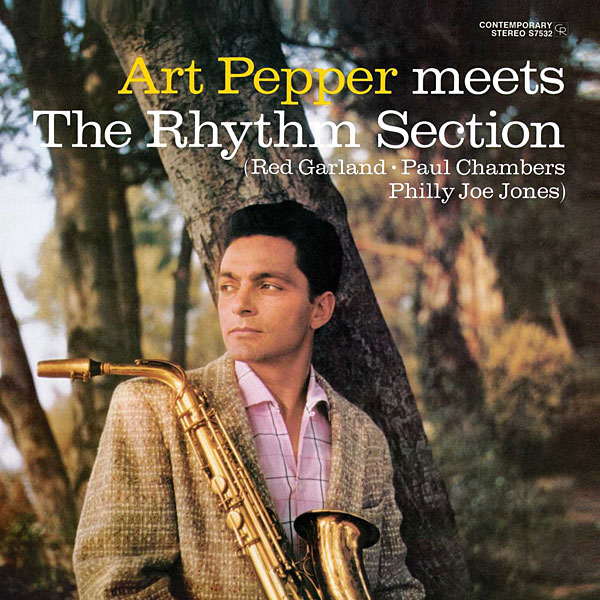
Every time I switched DACs back and forth, my appreciation for the excellence of the Musiccenter's D/A conversion and essential sound increased. On "You'd Be So Nice to Come Home To" from Art Pepper Meets the Rhythm Section (16/44.1 FLAC, OJC/Tidal), the external preamp noticeably increased color contrasts, transparency, smoothness, dynamics, weight, and warmth. If I may turn the estimable Gertrude Stein's most memorable phrase about my old hometown of Oakland, California, on its ear, there was more there there.
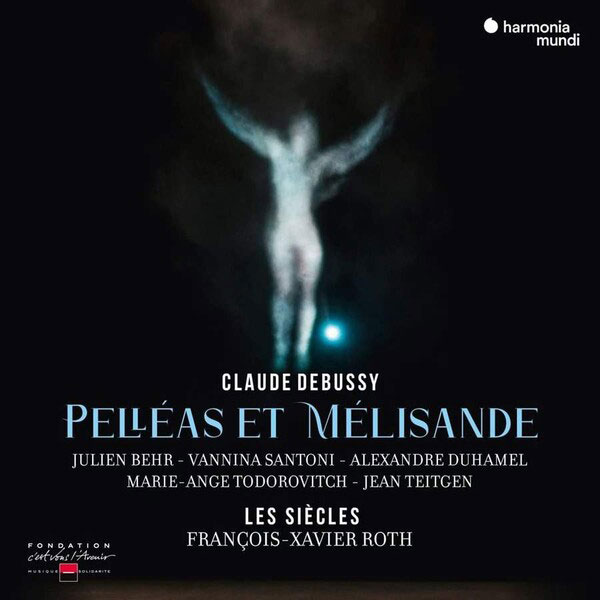
Switching DACs further increased smoothness and bass weight, but the improvements were far more subtle. When I compared DACs on Les Siècles's aforementioned Pelléas et Mélisande, the Burmester's internal DAC yielded voices almost as full, air almost as good, and bass that in this case was just as good. The Rossini lent an extra level of natural grace and air, at considerable extra cost. As I think back to all the stand-alone DACs I've heard that come close to the DAC's estimated share of the 151 MK2 Musiccenter's price, I have no qualms rating it among the best.
Conclusion
To repeat something chief designer Größler declared during our chat, which I already reported, above: "We want music to sound just as the artist intended. We aim for the essence—in German we call it 'Substanz'—in music."
Burmester's 151 MK2 Musiccenter delivers on its designer's promise. When paired with a quality external preamp, it facilitates all the joys, sorrows, sadness, and jubilation music offers. Music lovers who retain their love for silver discs will find them sounding even better when ripped to the unit's 2TB SSD, and those accustomed to file playback and streaming will find the Musiccenter's multifunction, multipurpose excellence a one-stop avenue to bliss. Through the 151 MK2 Musiccenter, music sings supreme.
Footnote 4: It seems they must be titled a certain way.
Footnote 5: This is a common problem with music server software generally. Once the music is ingested, everything works fine, but ingesting music and setting up a library is an error-prone process. Fixing it up—in my experience at least—requires a certain amount of competence in information technology. When I ripped my CD library several years ago and ingested it into Roon, I spent many hours editing metadata. Even though I observed Roon's suggested best practices, some files—especially multi-CD boxed sets that collected several works on a single disc—stubbornly resisted my efforts. One boxed set of Janácek operas took weeks to get right.—Jim Austin

"The 151 MK2's playback options are numerous. It can play files from USB sticks: There's a USB-C input on the front panel for convenience."
h

if you can cram a USB-C stick into that front socket & get it render music :) check out p. 20 of the 151's manual, it's USB-A up front as well...

You were right and I was wrong,
I apologize for not doing my due diligence.
herb

This is a common problem with music server software generally. Once the music is ingested, everything works fine, but ingesting music and setting up a library is an error-prone process. Fixing it up—in my experience at least—requires a certain amount of competence in information technology.
This is certainly true but I think it is much more significant for proprietary servers, such as the Burmester under review and the many other dedicated boxes whose embedded firmware does not support editing/tagging functions. That category includes those which run under such proprietary systems as HEOS and BlueOS. In all of these, the metadata has to be managed by some external device. Software-based systems that run Roon, Jriver, Audirvana, etc., have internal tagging/editing functions that can manage these tasks internally and more easily.

Kal,
I'm not as familiar with some of the other systems you listed, but I know that for years Roon--which I otherwise greatly admire and use daily--refused to take any responsibility for ingesting music, and even today, its functionality in that regard is limited. It does fine for mainstream first releases, but it struggles with repackaged reissues--especially multidisc boxed sets.
I'll stand behind the assertion that for all these systems, not just the "proprietary" ones, ingestion of music remains a struggle.
Jim Austin, Editor
Stereophile

I was being generous to Roon because of its rich data resources that, afaik, dwarfs those of all other players. That is the reason I included it with the other software packages that I've used even though they really limit the user's ability to edit and manipulate metadata. OTOH, the contrast between players that simply "ingest" music and those that offer the facilities to manage/edit/reconfigure music data and display preferences seems to correspond to the distinction between embedded proprietary players and those that are software based.
I'll stand behind the assertion that for all these systems, not just the "proprietary" ones, ingestion of music remains a struggle.
Yes but ingestion is improved if the input is correctly prepared, flavored and presented to please the palate. The music players that provide useful tools help me insure that.

This is a not a quality review.
I could tolerate unrepentant subjectivity from Art Dudley because of his amusing style, but not from JVS with his empty blather, e.g., "music sings supreme."
There is evidence of poor design with this device-- e.g., "We never make products intentionally complex,"-- yet it sounds like a very unintuitive interface.
Big red flag-- the designer was cagey about which chip is used! Couldn't the reviewer take a peek at the innards? Nothing about the volume control? Coupling caps?
The designer claims "SUBSTANZ" but the reviewer has a duty to apply KRITIK to such claims. This review mostly regurgitated the company line and as such is unhelpful.
For me to regain confidence in JVS, I suggest that he undertake some blind ABX demonstrations to verify his listening ability. Particularly with more subtle devices like a DAC, or a preamp, a reader like me would like to know if any difference is detectable or not.
PS: My primary objection here is a failure to look beyond the marketing BS of the seller. I don't expect a reviewer to be an electrical engineer, but the failure to look under the hood is journalistic malpractice. And to be clear, I'm not asking reviewers to do ABX for every review. It's laborious, time-consuming and risky to one's credibility. But when a review fails to enlighten, a little investment in the scientific rigor of ABX listening would bring us all out of the Dark Ages of total BS. It's the bridge between fanciful subjectivity and honest objectivity.
PPS: I do appreciate the music reviews from JVS. But his product reviews strike me as deeply lacking.

Hi
Agreed. A good reviewer should override the usual marketing/sales pitches provided by the vendors & provide hands-on using/audition experience of the product under review as if a potential purchaser of the product.
That's what we audio consumers go after.
Listening is believing
Jack L

to be exposed to the world at large for business reasons. No consumer by rights of purchase is guaranteed access to technology IP. If they sealed the dac module, would some suggest to bust it open to get to the 'truth'?
The same holds true for the manufacturer. Many simply aren't going to share their trade secrets. It's nice to pretend that consumer transparency is attainable, but I don't think it is. Should the manufacturer lay out their engineering design choices in a crowded field of competition? Do other industries do this, even a bit? No, they don't.
Some feel JVS' music reviews are trustworthy and his product reviews are not. The lack of trust lies more at the poster than the author. I also believe Burmester has a product that JVS states as he hears it. All else is idealistic dross to demand more.

Many high-end preamp reviews display the innards so we can behold the handiwork, e.g., surprisingly NAGRA uses a $10 ALPS pot, while Shindo uses a somewhat less ordinary Tokyo Cosmos pot. And DAC reviews normally indicate the chip or R2R selection. I don't expect a full "open the kimono" from the designer, but here the designer was SO cagey that it's a red flag begging for scrutiny. It's a $30K preamp-DAC! Is it too much to ask a few simple questions? My pre costs much less, and I know about its choke filter and its coupling caps and the different tubes and the pot and the transformer. It's part of the hobby.
Moreover, Burmester makes speakers and preamps and amps and car audio. So are they great at everything? (unlikely) Maybe they're more like Bose. A pricey brand with disappointing SUBSTANZ behind the big prices.

I guess if JVS is used to a very high level of sound reproduction, you would know that he feels Burmester's caliber of sound is definitely up to that benchmark.
We may all disagree of the slight variances in playback preferences, but I firmly believe he would state if the component was so far off the class price point, there would be several mentions throughout the review. Funny thing is, these days you really don't need to take his word for it.
As HR states somewhere in the recent AXPONA posts, this show is really an important time to hear these literally million dollar systems from several manufacturers in a number of disparate systems. This is to directly compare the highest of the high end sound systems extant from companies who offered their very own tip to tail system- like Burmester.
I found their room at 6pm Saturday- too late. (And I already partied the night before in downtown Chicago catching Wilco.) I was bummed- but I won't put forth assumptions as I haven't heard their gear and didn't talk to their staff, also at AXPONA.
Audio shows are really important for figuring out value behind component pricing (and system-matching!). I'm sure we all wanna know about all tech going into gear, but I don't feel that I have a right to demand it. There are exceptions.

I look forward to hitting one of these shows to listen for myself.
But insofar as the readers of Stereophile rely on the staff who attended this show, the issues of trust and confidence come into play. And I must disagree with this conclusory statement: "I guess if JVS is used to a very high level of sound reproduction, you would know that he feels Burmester's caliber of sound is definitely up to that benchmark." There were enough missteps in this review and other recent JVS reviews that I respectfully suggest a blind listening demonstration. The simplest ABX test would be a few DACs connected to the same preamp-amp-speakers. Think of it like a driver's test. Especially once people get older, we're all better off it older drivers recertify their ability. I remember Mr. Atkinson did an ABX to establish if he could hear phase/polarity and he passed the test:
https://www.stereophile.com/content/listening-tests-and-absolute-phase
"The listener's capacity for self delusion so that he really does hear differences which are nonexistent in reality (but enjoy a healthy existence in the pages of magazines) when he is aware of the device being tested, I would say is practically infinite."

Hope to see you at a show I'm covering some day. But please don't shout when you see me; my ears are very sensitive.
Thanks so much,
jason

or just the arguments of these pages, I could agree with you in several of your arguments. Without exposure to those high-priced systems, one has absolutely no reference point whatsoever to the current reality of state-of-the-art music playback.
The 'capacity for self-delusion' comment is so far off the mark, it's as if one has been sitting outside the concert venue simply watching behind a glass window, while others are inside listening first-hand. (No offense intended whatsoever.)
To hear the entire Burmester system or any of the least 20 other rooms that were at the absolute cutting edge of reproduction is to finally say to oneself- "Oh, sorry. I had no idea of how accomplished reproduction is these days". Million dollar systems are utter and complete ear-openers.
You really should go at your nearest opportunity. Take the entire weekend to fully appreciate all of the various performance levels provided in the 100+ rooms.

Next time there's a SoCal audio show, I'm going. My listening experience is confined to concerts and demos at the local dealers, and of course my own systems. What I don't like about the audio show setup is that the marketers are using THEIR chosen recordings.
If you don't think there's self-delusion in audiophilia, I'm not sure where to start. Perhaps Thinking Fast and Slow?

They frequently asked me what I would like to listen to in various demos I attended. Since many if not all are also streaming content, it is very possible they can play anything you request.
Regarding your last statement, I think it's rather the other way around. Perhaps 30 years ago when much of luxury audio was still very nascent, but even then I've heard very stable and accurate demos in the 1990's, albeit it was much more rare.
When you go to the next show, it will become starkly obvious the level of quality that is on display there. Splitting hairs about the top-tier components (and the ones in reviewed in JVS' system) will appear to be just that. At AXPONA, most if not all manufacturers were fully represented in live rooms, including D'Agnostino, Wilson, DCS and Nordost. It's as simple as a listen. I would be nothing less than stunned if all weren't impressed.